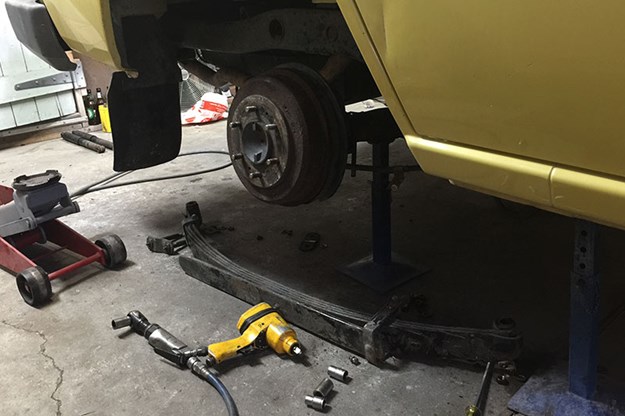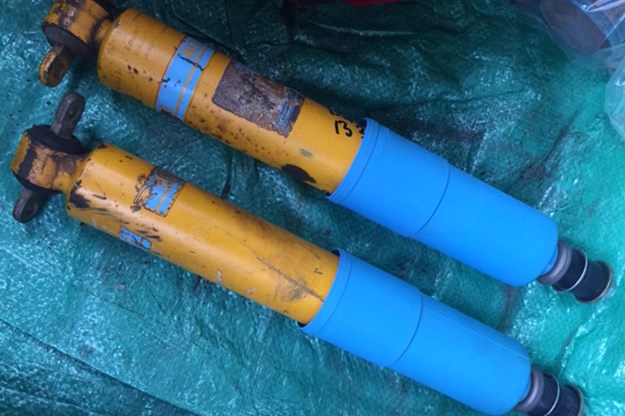Mitsubishi Pajero suspension swap - Our Shed
 By wearing a VW badge, my Pajero was able to attend a day out at the one of the local beaches with my VW-powered beach-buggy mates
By wearing a VW badge, my Pajero was able to attend a day out at the one of the local beaches with my VW-powered beach-buggy mates


|
|
By wearing a VW badge, my Pajero was able to attend a day out at the one of the local beaches with my VW-powered beach-buggy mates
|
Glenn Torrens makes his classic Pajero a better rig with a little lift
After I sorted its carburettor and air-conditioning, my H-plated 1989 Mitsubishi Pajero was running terrific. Regular readers will remember I bought two Pajeros and killed one; the second (rusty) Pajero had a set of raised, heavier-duty leaf springs and some bigger, better-quality dampers that I’d checked for condition and retained prior to it going to the scrap metal yard. Unlike some people I’ve met, I’m not a bloke that equates suspension lift to what’s in his trousers but after preparing several 4WDs for remote area touring, I know a vehicle’s off-road comfort and performance is improved with better suspension so I was keen to fit the aftermarket stuff to my Pajero.

Working on a Friday evening, the suspension swap was a two-beer task. I’d sprayed Inox penetrating fluid on the mounting nuts the week before so it all came loose easily
So after all the important mechanical work was complete, one summer evening I put my Pajero onto chassis stands and removed the rear wheels. With my trolley jack, I was able to lift and lower the rear axle, one side at a time, to easily remove and replace the leaf springs and dampers. The Mitsubishi symbol on the springs and the condition of the skinny little dampers (one was leaking) and the worn-out spring front eye bushes hinted that all this hardware was probably original… with 270,000km.
| Read next: GT's Pajero gets a fine tune

Donor cars are always handy to have!
Like most brands’ 4WDs vehicles from the early 1980s into the noughties, these Pajeros have torsion bar front suspension so the front ride height can be adjusted by turning the torsion bars’ anchor ends on the chassis with the vehicle sitting on its wheels – there is no change of ‘springs’ required. But unfortunately this suspension design offers very little overall wheel travel and raising the ride height more than 25-30mm means the front suspension tops-out, pounding the droop stops and sending horrible shocks up the steering column to the driver, and into the cabin. That’s not good for the vehicle nor the passengers so I didn’t lift the nose by much.

This is the rear suspension hardware retained from the rusty white Pajero I’d wrecked to put my yellow one back on the road: Springs, dampers, greaseable bushes and longer U-bolts
Back on its wheels, my Pajero sits around 50mm higher in the rear and 25mm front. With that increase in available suspension up travel, stiffer rear springs and better (although second-hand) dampers all round, my classic Pajero should carry the load of a full fuel tank, a well-stocked fridge and my camping gear far better over rough roads than with the under-done – and pretty much worn-out – standard stuff.

My mate Bruce Garland swapped Bilstein front dampers for a Pajero rear axle. He now has a tough LSD rear end for his Ford Escort rally car and I have a sharper handling butter box. Win, win!
Unique Cars magazine Value Guides
Sell your car for free right here
Get your monthly fix of news, reviews and stories on the greatest cars and minds in the automotive world.
Subscribe

.jpg)










